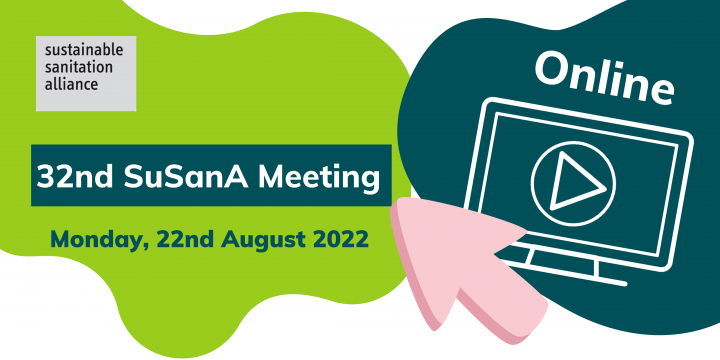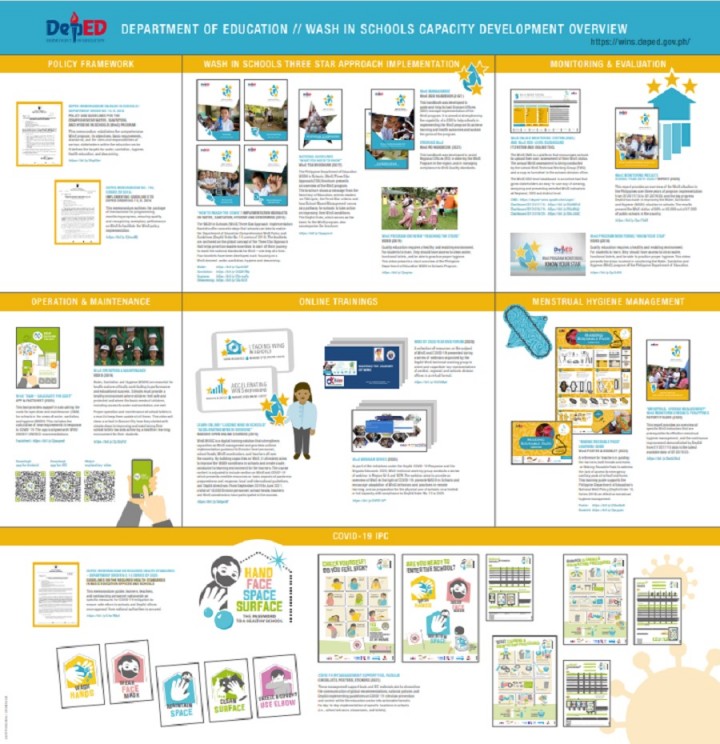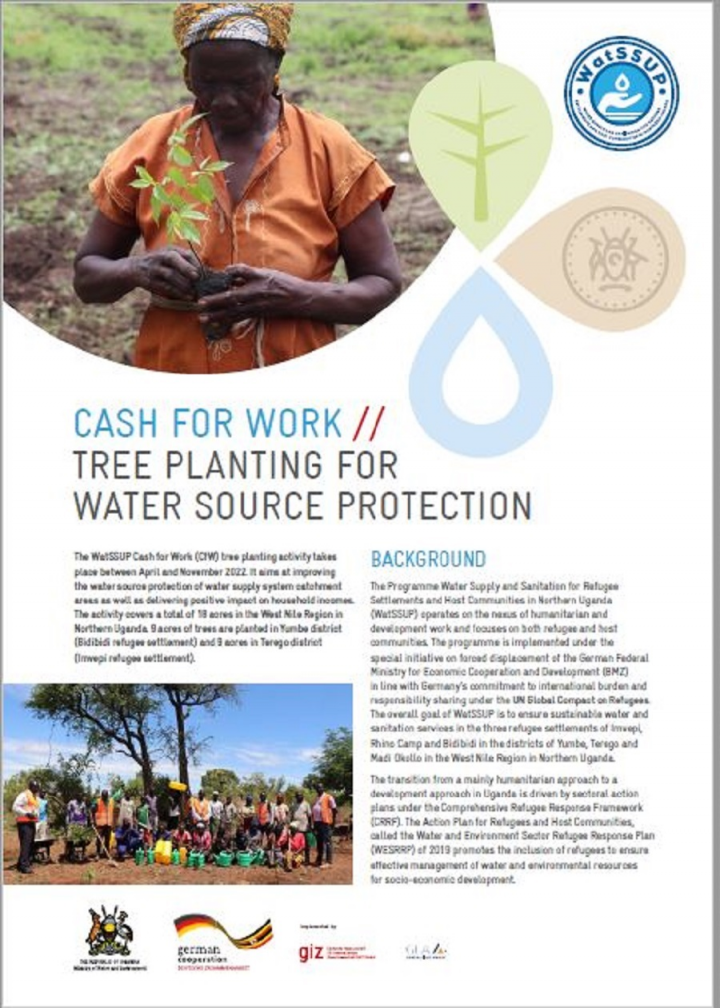SuSanA (2022) 32nd SuSanA Meeting - Presentations, Recordings and further Resources
The 32nd SuSanA meeting - the third time online - took place on 22nd August 2022. It was organised by the SuSana Secretariat with support and contributions from SuSanA Partners, Members, Working Groups, Regional Chapters and many more. This entry is the collection point of the different resources from the SuSanA Meeting, including recordings, presentations and program overview. We once again thank all the speakers and […]
Sunetra Lala and Nitya Jacob (2022) Decision tree for rural FSM in India
CRS (2021) SFD Report – Greater Tamale, Ghana
The Greater Tamale Area (GTA) refers to the geopolitical limits of both the Tamale Metropolitan Assembly (TaMA) and Sagnarigu Municipal Assembly (SagMA). GTA is located in the Northern region of Ghana and covers an area of 922km2. It is one of the largest cities in Ghana with a 2020 projected population of approximately 468,415. About 74% of its population live in urban areas. It has […]
(2022) Flood response support kit Options for drinking water treatment in flood-affected areas
This compendium in Hindi is useful for people struggling to secure safe drinking water in floods. It has been prepared for Maharashtra, India, but can be used in any flood-affected area.
ISC (2022) The Role of SuSanA´s Global Steering Committee Members (ToR)
The Global Steering Committee (GSC) is delegated by members to govern SuSanA 2.0 on their behalf during the periods between triennial election (every three years). As such, it is the principal decision-making body and governance vehicle during this period. It is responsible and accountable to members, primarily through the Annual Assembly, for ensuring sound strategic and financial functioning of SuSanA 2.0. Note: SuSanA is not an […]
(2022) Compendium of good practices on the safe reopening of schools WASH and IPC related experiences during COVID-19
“Compendium of Good Practices on the Safe Reopening of Schools: WASH and IPC related experiences during COVID-19” is a compilation of key initiatives and measures taken up in UNICEF supported states for WASH and IPC as part of the […]
WinS (2021) WASH in Schools capacity development overview
An overview of WinS capacity development activities in Philippine.
(2022) Report on World Environment Week Maharashtra, India Engaging the youth across Maharashtra through diverse interventions and campaign activities
This report provides details of activities and campaigns organized by UNICEF Maharashtra Department of Technical & Higher Education, GoM, NSS Maharashtra, for raising awareness amongst students and introducing innovative interventions to prevent environmental degradation and harm, across major Universities of Maharashtra, with the support of MVA, DoECC, GOM and Maharashtra Urban WASH-ES Coalition at RCUES of AIILSG, Mumbai. The World Environment Day 2022 […]
NIUA (2022) SFD (Lite) Report – Rudrapur Uttarakhand, India
Rudrapur (Kumaoni: Rudrpur) is a city in Udham Singh Nagar district in the Indian state of Uttarakhand, located (28°59'09.1"N 79°24'41.7"E) at a distance of about 250 km (160 miles) northeast of the national capital, New Delhi and 250 km (160 miles) south of State capital Dehradun. Rudrapur has a history of over 500 years, it was established in the 16th century by King Rudra Chand, […]
WASH in Schools Network (2022) WASH in schools in focus Country examples of pandemic preparedness and response through the lens of enabling environment matrix
The COVID-19 pandemic put front and centre for the needed attention on water supply, hand hygiene and sanitation. Using the Enabling Environment matrix like a camera lens to view national-level actions, the collective country examples from 20 countries in Africa, Asia and the Pacific supply rich learnings and underline the positive momentum showed by Ministries of Education to lead WinS, and the respective public, non-governmental and […]
GIZ WatSSUP (2022) Cash for Work - Tree Planting for Water Source Protection
The WatSSUP Cash for Work (CfW) tree planting activity takes place between April and November 2022. It aims at improving the water source protection of water supply system catchment areas as well as delivering positive impact on household incomes. The activity covers a total of 18 acres in the West Nile Region in Northern Uganda. 9 acres of trees are planted in Yumbe district (Bidibidi […]
Reuter, S., Demant, D., Heredia, G., Lüthi, C., Reymond, P., Schertenleib, R., Ulrich, L. and Zurbrügg, C. (2022) The Compendium of Sanitation Systems and Technologies for the Wider Caribbean Region - El Compendio de Sistemas y Tecnologías de Saneamiento para la Región del Gran Caribe
The focus of this Compendium is on the range of urban and periurban technologies that can be provided and managed as a utility service. Accordingly, we refrain from highlighting various pit latrine technologies as information about them are widely available in the English, French and Spanish Compendia, including the more interactive online version entitled “Sanitation Systems Perspective” (p.11). This Compendium is the first to feature […]
Sanitation Workers Forum 2021 (2022) Sanitation Workers Forum 2021: Closing Remarks
Closing address including key learnings (from rapporteur), feedback from attendees and next steps.
Sanitation Workers Forum 2021 (2022) Learning from Other Sectors Workshop
Workshop to connect key learnings from other sectors (for example, solid waste management, waste picking) to advocacy and research on sanitation work (human waste management) across the world. Speakers 1. Sonia Dias (WIEGO's Global Waste Expert) 2. Christy Braham (WIEGO, Belgium) 3. Lakshmi Narayan (KKPKP Waste Pickers Union, India) 4. Nalini Shekar (Hasiru Dala, India) 5. Dr Isack Rugemalila (U.G Mazingira Waste Pickers' Association, Mazingira Cooperative Society, Tanzania) Chair: Andrés […]
Sanitation Workers Forum 2021 (2022) Connecting Labour Rights & Sanitation Workshop
Polite notice: This session includes detail (through the documentary film and presentations) about real-life cases of sanitation worker deaths and injuries, which some viewers/attendees may find upsetting* Workshop to connect key learnings from the labour and human rights sectors (on occupational health and safety, formalisation, collectivisation, worker entitlements and responding to labour violations) to ongoing advocacy on sanitation work in the Water, Sanitation and Hygiene (WASH) […]
Sanitation Workers Forum 2021 (2022) In Conversation With Dr Amita Bhakta
A pre-recorded conversation between Dr Sally Cawood and independent consultant and researcher Dr Amita Bhakta.
Sanitation Workers Forum 2021 (2022) Looking Deeper: A Research Agenda to Advance the Health, Safety & Dignity of Sanitation Workers
Sanitation workers provide essential services often at cost of their health and dignity. Little research has been done and there is an urgent need for evidence for policy and programs. Participants in this workshop will hear from moderators on challenges and contribute to setting a global published research agenda by proposing research questions. Chairs: Kate Medlicott & Abisola Osinuga (World Health Organisation)
Sanitation Workers Forum 2021 (2022) Final Keynote Address: Mary James Gill
Keynote address by Mary James Gill from the Centre for Law and Justice (Pakistan), followed by Q&A.
Sanitation Workers Forum 2021 (2022) Good Practices Workshop: Garima Scheme, India (Sanitation Workers Forum 2021)
Includes reflections on the Garima Scheme in Odisha, India from G. Mathivathanan (Principal Secretary to Govt Housing & Urban Development Department, Government of Odisha, India), Manvita Baradi (Director, Urban Management Centre) and Meghna Malhotra (Deputy Director, Urban Management Centre). About Garima The Garima scheme for Safety and Dignity of Core Sanitation Workers was launched in 2020 by the Housing and Urban Development Department, government of Odisha in […]
Sanitation Workers Forum 2021 (2022) Traversing the Path of Making Manual Pit Cleaning Safer in LMICs
Thousands of lives of sanitation workers are endangered and lost in low and middle income countries (LMICs) while manually cleaning confined spaces like septic tanks and sewer lines. These deaths are avoidable if we take corrective measures. Join us to discuss leading practices that cities can observe to make work safer for sanitation workers! Speakers Prabal Bhardwaj, PMU- SBM, Ministry of Housing & Urban Affairs, India Huzir Rizal […]












